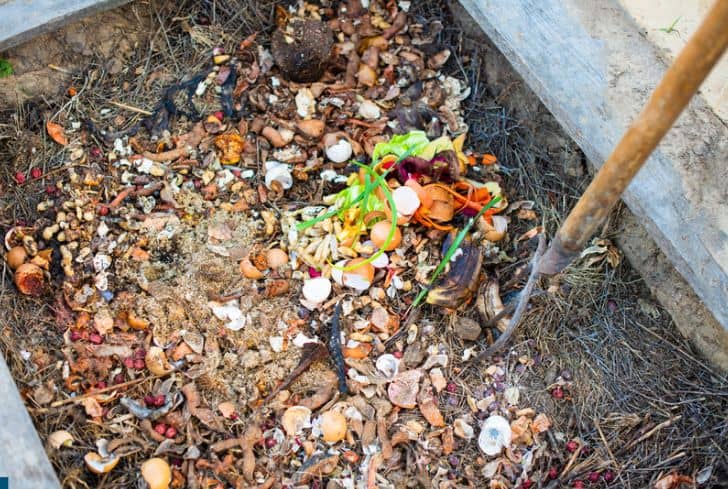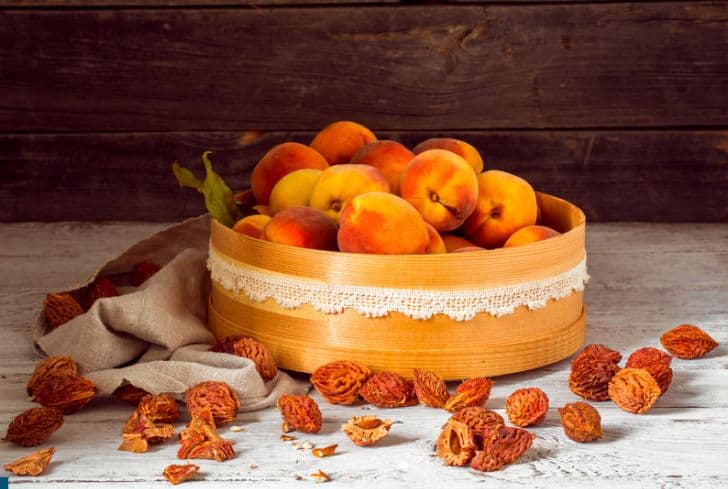If you have a garden compost heap or a residential Bokashi bin, you will never have to worry about running out of room in the kitchen garbage for items like used salad leaves or fruit peels. However, even the most seasoned composter can be stuck with some produce waste.
Pits are a necessary component in enjoying the delectable peach fruit. You might be afraid to throw away your peach pits even though they are not tasty. Peach pits, on the contrary, can they be composted? Read on to find out!
Are Cherry Pits Compostable?
Cherry pits can be composted easily; however, the decomposition process takes longer. The seeds are quite intriguing. Remember that the small nut inside the hard shell is quite particular about the environment that it grows in.
This is so that it can be discharged everywhere and penetrate the digestive tract of wild animals. They actively resist decomposition due to their adaption, yet it nonetheless occurs.
No matter how robust a material is, microbial activity, oxygen, water, and heat will eventually break it down. Biodegradation will happen, even if it takes a very long time. Cherry pits can be compared to this.
They will not decompose quickly, but if you let them sit for a while, they will become flexible compost material. If the pits have gotten bigger, degradation will not happen for a while, so you will need to be patient.
It is very hard to estimate how long it will take for these seeds to disintegrate due to their tiny size. However, if you continue rotating the compost every week, the materials necessary for speeding up the process will be distributed as needed.
In ancient Rome, soldiers were forced to eat cherry pits and had a penchant for spitting the pits out. The seeds took root and multiplied abundantly throughout the empire. It used to be said that all the old Roman routes could be found by simply following the wild cherry trees.
This may be the origin of the fabled cherry tree-growing power of throwing away cherry pits. Of course, many individuals have also grumbled about not leaving behind any trees. Cherry pits can be thrown outside. No guarantee can be given that a tree will grow in the next few years.
Benefits of Composting Peach Pits
Do peach pits significantly increase the volume and nutrients of your compost? Most likely not. However, there are still valid reasons to compost them instead of discarding them.
Even though it takes a few years for peach pits to disintegrate in compost, it still takes less time than decomposing in a landfill. A landfill offers no assurance that the nutrients stored inside will return to the earth.
Consider saving the peach pits for crafting or DIY projects if the compost heap is tiny or you do not want to wait years for them to decompose.
Protects The Environment
Composting peach pits helps in reducing the amount of waste in the environment. Peach pits can take years to decompose; hence, when dumped in garbage or landfills, they do not easily decompose into the soil, affecting the environment.
Creates a nutrient Rich Soil Enhancer
Additionally, composting produces a nutrient-rich soil booster that can aid in the growth of plants. Compost or humus, the finished product, is a dark, soil-like material that can be used as mulch, on farms, in gardens, and in other landscaping projects.
How To Compost Peach Pits?
It is easy to dispose of peach pits by composting them instead of the kitchen garbage! They do not need to be separated from the other parts of the peach or treated in any other way.
Some committed composters soak fruit pits before composting to hasten the decomposition process. Before composting, soak peach pits in hot water to tenderize the tough outer shell.
After being soaked, small pits, such as cherry pits, may be processed in a food processor. Peach pits, however, could be too large for the typical food processor to handle safely.
When adding them to your compost pile, divide the peach pits evenly. Pits near the bottom of the compost will break down more quickly and have a lower chance of germinating.
Leftover peach pits that have not yet decomposed can be removed by sifting the compost at the beginning of each season. Re-add them to the compost heap for an additional year of rotting!
No need to worry if some full peach pits end up on your flower beds. Re-insert them in the compost to keep up the decomposition process. Fruit pits that have been composted have the potential to develop into seedlings. However, it is quite uncommon.
You can either dig the seedling deeper into the soil or remove it to kill or transplant it in the garden if any peach pits in the compost do sprout. You can be sure your compost bin will only sprout a peach tree away.
Since the peach season is brief and incredibly sweet, you should make the best possible use of the summertime peaches this year. Do not leave any peach remaining when making those pies and cobblers. Ensure you make use of the pits, too, by composting them.

How Long Do Peach Pits Take To Decompose?
Be mindful that peach pits can take many years to decompose before adding them to your garden compost. Time is relative when composting, of course.
The earlier those peach pits disappear, the quicker your composting mechanism will generally break down stuff. You need to cut it into tiny pieces, just like you would most materials. The issue is that this is difficult to do with stone fruit pits, such as peach pits.
Stone fruits are so named for a reason. The peach pit can either be added to already-boiling water or boiled separately. This makes the exterior softer and speeds up its decomposition.
Blend the peach pits. You are less inclined to establish peach trees inside your compost because doing so will damage the outermost layer and maybe kill the seed. To soften them, immerse them in water for a few days or even overnight. You can physically break them apart with a mallet or nutcracker.
Potential Concerns of Composting Peach Pits
Composting peach pits is perfectly fine and does not affect the environment in any way. However, you might be concerned about composting peach pits if you have a pet animal. This is because your pet might dig up your compost and swallow the pit, which can lead to choking.
Hence, if you have a pet, you must ensure your compost is in a location your pet cannot access. That way, you have nothing to fear, and your pet is perfectly fine. Asides from this potential concern, there is no need to worry about any effect of composting peach pits.
Uses of Peach Pits
Peaches are fantastic, which should not come as a surprise. The subtle taste of a peach renders it a versatile component for all kinds of recipes, whether they call for pie, crostini, salad, or a cocktail.
A peach tree seed is enclosed in a peach pit, often called a peach stone. It does not constitute a seed in its entirety. Instead, the nearly indestructible outer shell conceals a smaller seed.
Peaches are considered to be drupes, a class of fruit in the realm of botany. Apricots, cherries, and plums are examples of other drupes. Stone fruit, which refers to any drupes with hard pits, is another name for them.
There are a few inventive methods to use peach pits in food, even though the flesh of the stone fruits is sometimes the most desired component. Below are some uses of peach pits.
To Infuse Flavor
Although you have probably heard that stone fruit pits might be harmful, the truth is more nuanced than that. Even though they may contain minute amounts of amygdalin, heat destroys cyanide compounds, and it would take many pits to be deadly.
You can eat them or break open the pits to see the kernel inside. The core also referred to as a noyaux, is commonly used for flavoring marzipan and almond extract after roasting due to its flowery and nutty scent.
Enrich Garden Soil
Fruit pits can enrich the soil in your garden with nutrients. Compost enriched with nutrients can improve the soil in the garden or potted plants. Peach pits can aid in this. You only need to mix the pits in while creating the compost.
Improve Food Flavor
Put a single cup of the pits and four measuring cups of the vinegar in a glass container to get started. Shake the contents of the jar vigorously while covering it. Let the jar remain at room temperature for three weeks in a dimly lit area. This results in tangy vinegar that can improve the flavor of any food when added to it.
Craft Original Jewelry And Decorative Items
Crafts produced from fruit pits have a particularly genuine quality. You may use peach pits and other fruit pits to make jewelry, decorate tote bags by gluing them on, and even design one-of-a-kind items that will give your house a hobo vibe.
Conclusion
Peach pits can be disposed of sustainably and greenly by composting them. Peach pits can still disintegrate in a composting system given enough time, although it takes longer due to their difficult, woody character.
Overall, adopting the environmentally friendly method of composting peach pits is a move towards minimizing waste and having a beneficial impact on the environment, whether you decide to do so to turn the trash into a useful resource for your garden or investigate the potential of planting new trees.






